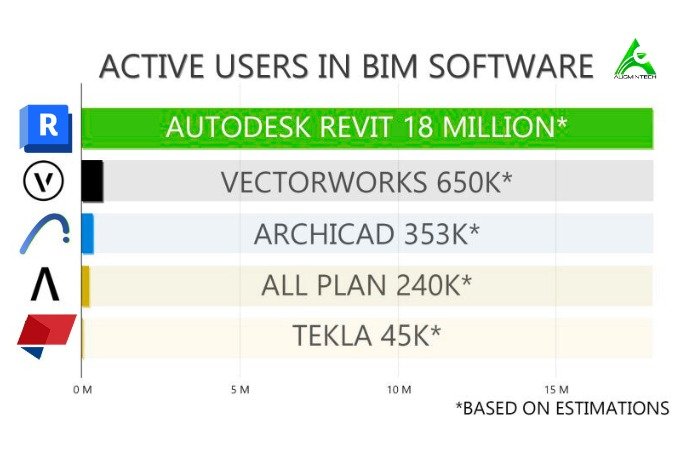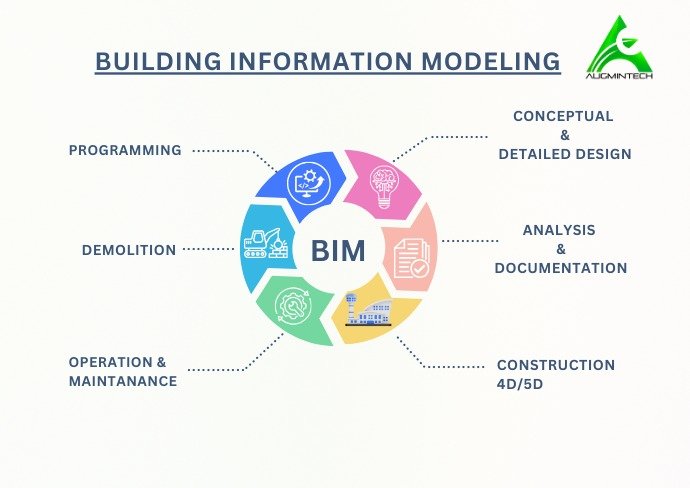Best BIM Software for Beginners: Revit vs Archicad vs Others

- May 19, 2025
- 11:29 am
- 42000+ Comments
Table of Contents
If you are starting your journey in Building Information Modeling, one of the first questions is, “Which BIM software should I learn first?” With so many tools available — Revit, Archicad, Navisworks, Tekla — it is easy to feel overwhelmed.
According to a recent industry report, over 72 percent of AEC firms globally use Autodesk Revit as their primary BIM tool. Meanwhile, software like Archicad and Tekla continue to dominate in specific regions and disciplines. Choosing the right BIM platform early in your learning journey is critical to match job market demand and boost your career prospects.
In this beginner-friendly guide, we compare the most popular BIM software options and explain which tool is best for architecture, civil, or MEP professionals just getting started.
Why Choosing the Right BIM Tool Matters
Learning BIM takes time and effort. Picking the right software at the beginning can:
- Save you months of learning the wrong tool
- Make you job-ready faster
- Align your skills with what companies actually use
1. Autodesk Revit: The Most Widely Used BIM Tool

Who it’s for: Architects, MEP engineers, and civil engineers
Why it’s popular:
- Used by 72 percent of BIM-enabled firms worldwide
- Covers architectural, structural, and MEP modeling in one platform
- Integrates with tools like Navisworks, BIM 360, and Dynamo
Strengths:
- Largest BIM user community globally
- Official Autodesk certification available
- Required in most BIM-based job descriptions
2. Graphisoft Archicad: Architect-Friendly Alternative
Who it’s for: Architects and design studios
Why it’s used:
- More popular in Europe and Australia
- Strong parametric modeling and rendering tools
- Offers smooth modeling for design-centric workflows
Strengths:
- Simpler UI for architects
- Great for conceptual design and visualization
- Strong integration with interior design workflows
3. Tekla Structures: BIM for Steel and Concrete Detailing
Who it’s for: Structural engineers and civil consultants
Why it’s useful:
- Specialized in steel structures, concrete detailing, and rebar workflows
- Widely used in infrastructure and industrial construction
Strengths:
- Excellent constructibility and detailing accuracy
- Industry standard in fabrication drawings

4. Autodesk Navisworks: Coordination and Clash Detection
Who it’s for: BIM coordinators, project engineers, MEP professionals
Why it matters:
- Used to combine and review models from multiple disciplines
- Essential for detecting design clashes and construction conflicts
Strengths:
- Supports 4D scheduling and visual construction simulation
- Integral to team collaboration in large BIM projects
5. Bentley OpenBuildings Designer: Infrastructure-Focused BIM

Who it’s for: Civil engineers, transportation professionals
Why it’s relevant:
- Focus on rail, road, and public sector projects
- Emphasis on large-scale infrastructure and interoperability with GIS tools
Strengths:
- Used in government projects globally
- Native IFC support for openBIM workflows

Which BIM Software Should You Learn First?
For 90 percent of BIM beginners, Autodesk Revit is the best starting point.
Why:
- Over 70 percent of AEC job listings worldwide require Revit
- Most PG-level BIM programs (including Augmintech’s) use Revit as the core software
- Revit skills are transferable across architecture, structure, and MEP disciplines
Once you are confident in Revit, you can expand into:
- Navisworks (for project coordination)
- Dynamo (for automation)
- BIM 360 or ACC (for cloud collaboration)
Where to Learn BIM the Right Way
The Post Graduate Program in BIM by Augmintech offers a structured and job-oriented approach to mastering BIM tools.
What You’ll Learn:
- Autodesk Revit for architectural, civil, and MEP modeling
- Navisworks for clash detection and 4D simulation
- BIM 360 for cloud-based collaboration
- Dynamo for automation and parametric workflows
Why It’s Ideal for Beginners:
- No prior software experience required
- Includes real-world projects, live mentorship, and ISO-compliant workflows
- Prepares you for job interviews and international BIM certifications
Visit augmintech.com to learn more.
Next Steps for Beginners
Choosing your first BIM software is a career-defining decision. Start with a tool that is industry-validated, globally recognized, and widely adopted in hiring workflows. Revit meets all these criteria, making it the top choice for any early-career BIM learner.
Master it with a professional training program and unlock roles in design, coordination, and project delivery across the AEC industry.


![BIM Management Course Online [2025] – PGP in Architecture for Global BIM Careers](https://augmintech.com/wp-content/uploads/2025/09/BIM-Management-Course-Online-2025-–-PGP-in-Architecture-for-Global-BIM-Careers.png)


